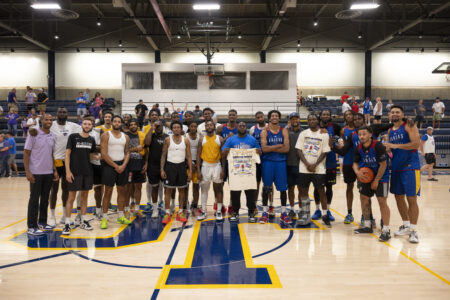KU shooting the ball well
The Kansas University men’s basketball team ranks second in the nation in field goal percentage with a .516 mark, behind Boise State’s .522 accuracy rate.
That doesn’t mean Kansas has a roster stocked full of great shooters. What it reveals is that the Jayhawks generally – the Missouri game was an exception – have terrific ball movement in the halfcourt, create turnovers that lead to uncontested layups, execute plays precisely – many of which result in alley-oop dunks – and are wise enough to avoid forcing up frequent ill-advised shots.
“I think it’s just letting the game come to us, instead of forcing shots,” junior guard Mario Chalmers said. “I think we all do a good job of that, and I think that’s why our field goal percentage is so high.”
The ball movement has been noticeably better this season.
“Once you get the defense moving side to side, we have to find the man who’s open and he has to take the open shot,” Chalmers said.
As does the NBA, the NCAA still uses the archaic formula of dividing the number of field goals made by the number of field goals attempted to calculate shooting percentage. The obvious flaw in the system is that the formula assigns equal value to two-point and three-point field goals, when, obviously, the scoreboard values a three-pointer as one-and-a-half times greater than a two-point shot.
The only true statistical measure of shooting efficiency is adjusted field goal percentage, which gives one credit for a made two-point field goal and one-and-a-half credits for a made three-pointer.
Here is a look at the remarkably efficient shooting numbers of the players on the Kansas roster, broken down into two-point percentage, three-point percentage and a proper blending of those two, adjusted field goal percentage.







